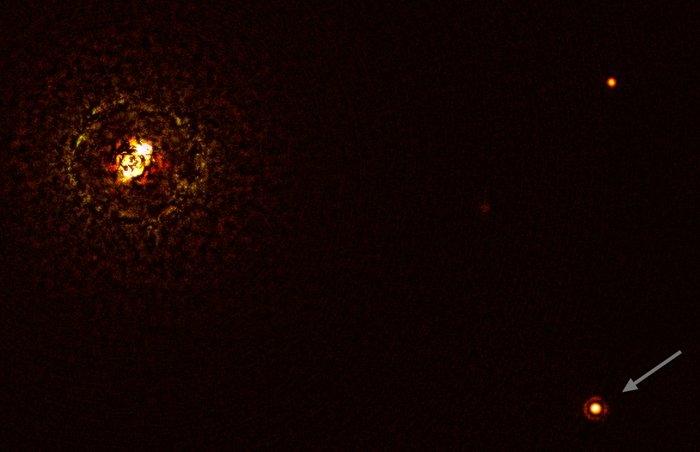Here comes the discovery of a new exoplanet named b Centauri b. Well, an Exoplanet, a planet that does not orbit the sun and is simply not part of the solar system. This word EXOPLANET and its research are continuous for years and every new finding of it just widened our approach to observing planets in the universe. The recently captured shimmer image of an exoplanet doing the same.
b Centauri b, having a two-star system
That exoplanet is named b Centauri b and causing new discussion because it does not orbit one star ( as Earth orbits star Sun), but two-star system b Centauri, present at a distance of 325 light-years.
This is the biggest binary discovered till now. This binary of two stars has mass 10 times that of the sun. Scientists are stunned as they never hoped that a huge, hot star like b Centurai can even have a planet. This binary of two stars has mass 10 times that of the sun. Exoplanet b Centurai b orbits around a distance of 556 AU which is 100 times Jupiter’s orbital distance from the sun.
How b Centurai b is dissimilar?
Markus Janson of Stockholm University in Sweden says “Discovery of this exoplanet completely changed viewing massive stars as hosting a planet”.
Capturing images of exoplanets is not an easy task. As they present at large distances, reflecting very dim light. This happens due to the intense brightness and radiation of their star. But here b Centauri b varied because it is much closer than other exoplanets but has enough distance from its stars and thus stars light does not make it invisible. The binary start system with an exoplanet is also very young and is 15 million years of age. The binary star system was earlier thought to be one star as they are very near to each other, making b Centurai hotter and it starts appearing blue sometimes.

How the formation of b Centurai b is different?
Astronomer Gayathri Viswanath of Stockholm University says, “The planet in b Centurai system is the total opposite of what we observed here with sun and earth. Its environment is dominated by radiations. Stars, planets and so the distances are bigger”.
Such a large distance as per researchers is the possible reason for the existence of this exoplanet. That distance might halt gas giant from getting evaporated by intense radiation.
b Centauri b presented a challenge to the general model of planet formation. As stars form because of the collapse of material under their gravity and start spinning then. This creates gas and dust around stars that act as their food. After a star gets formed the remains continue to orbit in a disk around it. That material then starts clinging together creating bigger and bigger objects and at last planet forms. This is the general way of the formation of stars. But the study of b Centauri b conveys is not even close to being get formed from its stars.
The mass ratio of b Centauri b to b Centauri is almost the same as Jupiter to the Sun have. And in such a possible case exoplanet may be developed near to its binary and then pushed outwards to its original condition. However, astronomers said that the exoplanet and its formation is different and redefining our understanding of planetary systems, showing that exoplanets can take birth in remote distances and locations than what we observed and assumed earlier discoveries of exoplanets.
